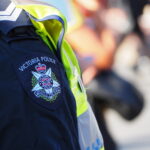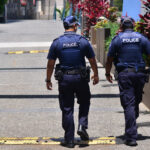Fatal Police Shootings Are at An All Time High in Australia

A man was shot dead by New South Wales Police this week. According to Assistant Police Commissioner Stuart Smith, officers confronted the man who was wielding a knife at Auburn train station, and had just “seconds” to react after he launched an attack on them.
The man was shot twice in the chest and pronounced dead in hospital.
Police claim the deceased was involved in the stabbing of a man unknown to him just moments earlier.
Details are scant at this stage, although an internal investigation is now underway, as is protocol when a member of the general public is shot by police.
The killing comes in the wake of another of a father of two at or around Tenterfield Police Station just weeks ago, the details for which are similarly sparse – and the latest shooting has raised concerns about the fact police shootings are becoming more frequent.
Police shootings are more common than ever
In fact, the most recent statistics released by the Australian Institute of Criminology (AIC) show that fatal police shootings have reached an all time high across the nation.
The report on deaths in custody in 2019-20 indicated that there were 24 deaths in police custody or custody-related operations. Of these, 16 were attributable to police shootings. This is the highest number of shooting deaths since record keeping began in 1989-90.
Over that period, Australian police have shot dead 164 people. The AIC report shows there has been a 78% increase in fatal police shootings between 2018-19 and 2019-20.
National crime statistics during that same period reflect an increase in crime across the board in 2018 (compared with the previous year), another increase in 2019, but a decline in 2020, most likely attributable to Covid lockdowns.
In New South Wales specifically, violent crimes, such as assault and sexual assault, armed robbery and non-domestic violence related offences show a similar pattern, and declining since the start of the pandemic.
But does the corresponding rise in crime rates justify the increase in police shootings? And should we expect less shootings now that crime appears to be declining?
More transparency needed
It’s difficult to say given that up-to-date statistics on police shootings are very difficult to get hold of, and there’s a distinct lack of transparency around the investigations into police shootings.
Certainly during Covid, here in New South Wales, the Police Commissioner at the time Mick Fuller made no secret of his encouragement of officers to ‘put aside community policing for a moment’ and use tough enforcement.
Victoria police were also widely criticised for taking a similar approach.
But many would argue that the ethos of community policing has not truly been at the front and centre of policing for a long time – not just here in New South Wales, but across the country.
The rise of ‘warrior-style’ policing
Over the years, police weaponry and law changes have both incrementally provided more power to police. And a great deal of community concern has been expressed that it’s perhaps too easy for police to reach for the deadly weapons without first using other policing tactics or tools they have at their disposal, even though weapons such as tasers and capsicum spray can also result in death.
Under the New South Wales Law Enforcement (Police and Responsibilities) Act 2002, (LEPRA) the use of police force has to be lawful.
Police reiterate time and again that officers are trained to use weapons as a measure of last resort, and are only meant to shoot to kill in self-defence – in other words, if there is an imminent threat to themselves, another officer, or a member of the community, and the shooting is a reasonable response to that threat.
However police officers are also trained to shoot at a person’s torso – there are too many risks associated with aiming at a limb (and missing and shooting another officer or bystander).
Police also want to stop the threat, which won’t necessarily be achieved by shooting a limb, or an ‘extremity’ of the body. However, a shot to the torso is more than likely to result in serious injuries which can cause death.
If a police officer does discharge a firearm in an incident with the general public, there will always be an internal investigation. If there is a death, there will be a coronial inquest.
Any shooting which is done other than in self-defence is generally considered to be a criminal offence.
In New South Wales, however, there is an exception which grants police officers permission to use a lethal weapon on a suspected terrorist, even when there is no real or perceived threat to the general public at the time. Furthermore, in these situations, if a person is killed, police officers are granted immunity from prosecution.
Investigations into police shootings are expected to outline the case for lethal force – and outline
the assessment of risk factors along with the decision to shoot, but there is also widespread concern that the threshold for proof that lethal weapons are justified is too low.
Undoubtedly, being a police officer is a tough job, but there’s a growing mistrust in police generally, which may be correlated with the considerable community concern which exists around the prolific use of lethal force, particularly as a growing body of research suggests that arming police with more weapons, or more powers under the law, doesn’t guarantee safer communities.







